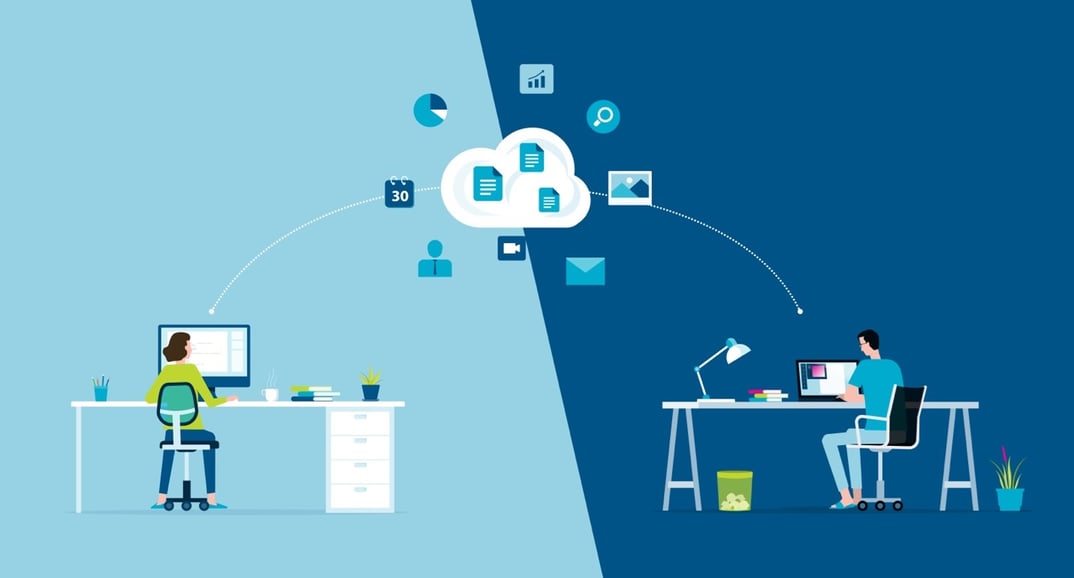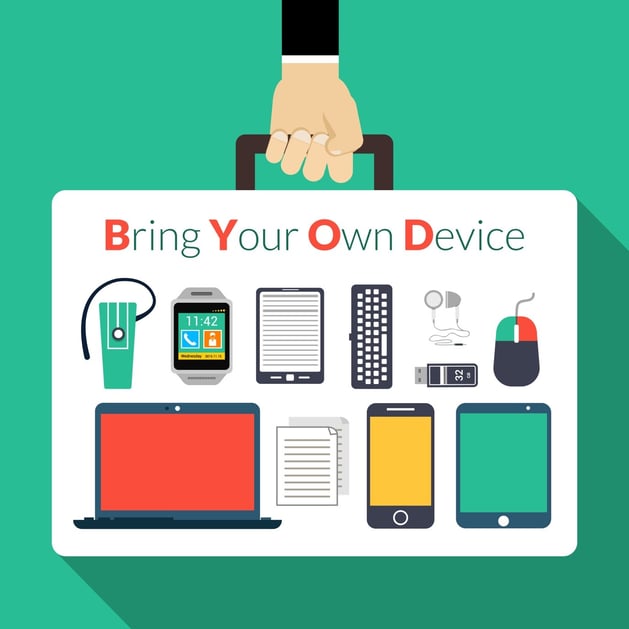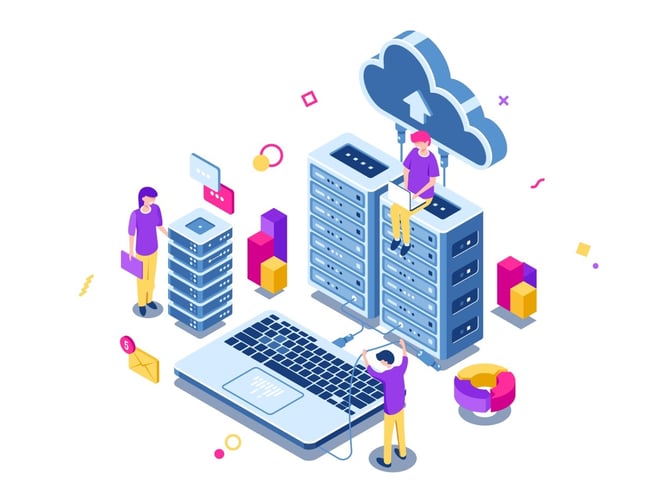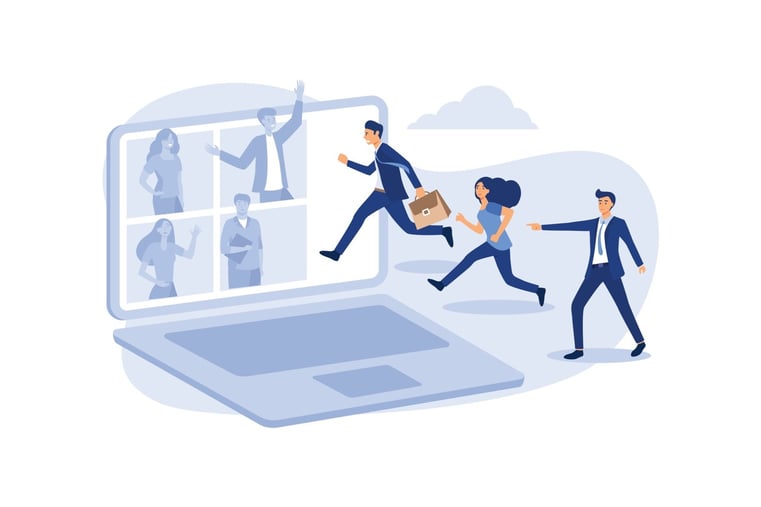Impact of the WFH Revolution on eDiscovery
The mass virtualization of the national and global workforce caused by the pandemic has reshaped how humans live and work in ways that we are still beginning to understand. The work from home (WFH) revolution happened shockingly fast for many organizations and as a result, many are only now coming to grips with the wide-ranging impact.
Law firms and in house legal teams alike had little choice but to embrace remote work, and quickly. Video conferencing technology, collaboration tools, a myriad of messaging apps and cloud-based technology made working from home feasible for many, but questions around preservation and retention, challenges managing the new ESI formats and a blending of personal and private digital lives have added new wrinkles to both enterprise information governance and discovery obligations.
Even as social distancing and quarantine become an increasingly distant memory for many, the WFH revolution seems to have a stickiness (at least in a hybrid way) that few could have foreseen. This means that many of the novel challenges for IG and eDiscovery professionals posed by remote workforces reliant on new technology are not disappearing any time soon. In fact, the hybrid work that is replacing the full work from home revolution for many as organizations push for return to office (RTO) may create new unforeseen headaches as well.

New Data Headaches Posed by WFH Revolution
In a matter of days or weeks, businesses from mom and pop to multinational corporations had to pivot from predominantly on-site to completely remote workforces. This pivot was not a seamless one for many and has created many unexpected (but totally foreseeable) consequences for the eDiscovery professionals and regulators facing the ESI fallout.
- New Kids on the ESI Block:
Little known tools like Zoom, G-Suite, Slack, WhatsApp, and Microsoft teams became daily drivers for billions of remote workers almost overnight. Some tools never even considered eDiscovery requirements for assisting in uncovering relevant information, and for those that did, the sheer volume and complexity of ESI created new challenges that few case teams could have anticipated.
These new data sources do not readily conform with the document centric structure of many eDiscovery tools and the very underlying data formats (JSON and MP4 among others) may not play nice with your preferred review platform. Ensure that you have the right tools to meet these headaches at the outset.

- Video Killed the Doc Review Star:
The video content of Teams, Zoom, Skype, and google meet pose unique challenges in terms of both preservation and review. The right tools, preferably ones using computer vision to identify key video concepts can greatly assist in managing this data. Even if an organization has enacted a return to office approach, virtual clients and hybrid colleagues will likely mean that digital video evidence forms these sources is not going away any time soon.

- Co-mingling of Personal and Business Devices
With the mass migration from the office to the home, many found themselves poorly or partially equipped for the virtual office. To bridge this gap many business professionals looked to personal computers, applications on personal devices, O365 on their personal smartphones and other work arounds involving the use of personal hardware or software for business purposes. The result is an increasingly challenging separation of work and personal data when scoping and collecting ESI.
Information governance policies designed to protect company data on secure company managed devices are ill equipped for the surge of shadow IT and BYOD that the WFH revolution spurred on.

- Cloudy with a Chance of ESI
The dramatic increase in adoption of cloud computing, that allowed legal professionals to work and litigate from anywhere, further adds complexity for scoping and collecting data. The shift to cloud-based software and applications means that service providers and counsel alike must reconsider some of their scoping and collection methodologies. Direct connectors and tools optimized for cloud collection are often necessary when dealing with business-critical ESI sources like O365, Slack or teams, WhatsApp and more.

- The App-ocolypse:
Applications like WhatsApp, Facebook messenger, and WeChat are being used by a whopping 38% of employees for business purposes and collaboration tools like Slack, Teams and G-Suite all have seen massive adoption by organizations and individuals alike. Any eDiscovery workflow ought to include these data sources as potentially relevant ESI from the outset of matter scoping if you want to ensure key evidence is not missed.
Recent cases like the non-solicitation case Forse & ors v Secarma Ltd, Hostile work environment case Darren Case v Tai Tarian highlight not just that evidence can and often is found in these applications, but that the cause of action may arise from activity on these chat apps as well.

- Work from Where:
The WFH revolution triggered a mass migration of remote workers to less expensive and population dense regions at an unprecedented rate. From a collection and data preservation standpoint this means data collection is not nearly as easily done in a central location or at a company headquarters.
Cloud backup and other centralized hardware has not migrated, but individual endpoint devices for custodians might have relocated across the country for some organizations. when it comes to scoping a matter or planning for forensic collection organizations should factor this additional logistic headache and cost in when planning to collect digital evidence.

WFH Shifts to Hybrid
Return to Office (RTO) has been dominating the headlines recently with high profile people from Elon Musk to President Joe Biden encouraging and in some cases demanding RTO. Despite this push, not all are embracing a full RTO.
Organizations from Apple to Comcast and more have opted for more of a hybrid return, with employees in office partially anywhere from 1-3 days a week. Whatever your organization’s approach, the reality is that the economy has not snapped back from 100% WFH to even most people fully back in office.

What Does the Future Hold?
As a result, hybrid combinations of corporate counsel, outside counsel and legal service providers are unpacking in real time what a hybrid work approach means for ESI preservation, collection, and review.
Practically this means that even if you are sitting in an office there is a high likelihood that your workforce is still relying on videoconferencing tools like Zoom, collaboration tools like slack and messaging apps like WhatsApp to remain connected in a hybrid world. Whatever your organization’s approach to office space, the reality of eDiscovery obligations in a hybrid world may remain strikingly like the WFH one- with apps and cloud data remaining highly relevant, collection nuanced and ESI headaches a plenty!

